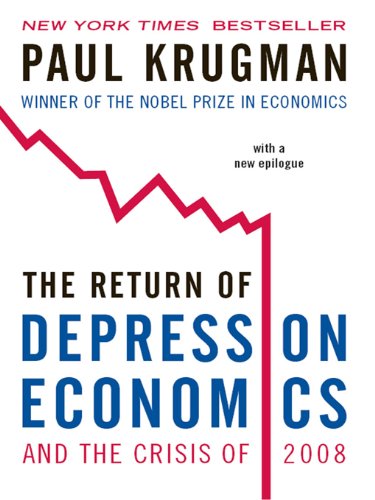Choke Points: Logistics Workers Disrupting the Global Supply Chain, Jake Alimahomed-Wilson and Immanuel Ness (Eds.) Pluto Press, 2018, pp. 272, £18.99, ISBN: 978-0-7453-3724-1
On Friday, November 26, 2018, the Royal Assent was given to Bill C-89, or, an ‘act to provide for the resumption and continuation of postal services’, thereby ending the rotating strikes of Canada Post workers that have rocked the country since October 22. The bill legislated workers back to work and imposed a mediator whose decision is to be binding on all sides. Justifying the legislation of such dubious legality, Trudeau government and the Crown Corporation invoked the potential cost to Canadian businesses as the holiday season was approaching. Indeed, Canada Post spokesman declared that “the prolonged and ongoing strike activity has not only caused significant backlogs, it continues to greatly reduce our ability to process and deliver mail and parcels across the country”. It is no wonder then that the Canadian Federation of Independent Business poured praise on the federal government for the actions it undertook against organized labor.
What the strike of the postal workers reveals, among many other issues, is the importance physical infrastructure plays in the smooth functioning of the capitalist global economy. What this physical infrastructure consists of is the world wide web of maritime, air and land routes that are staffed by workers without whom the economy would not be able to function. Take away the longshoreman, seafarers, truckers and the sailors and who is to deliver the commodity? Logistics are an essential aspect of capitalism.
Jake Alimahomed-Wilson and Immanuel Ness’s important book aims to place the logistics workers at the heart of the analysis of workers struggles around the world and show their unique position within the capitalist world system. ‘Choke points’ refer to the places of work which also represent critical nodes in the capitalist supply chain. Although scholars themselves, Alimahomed-Wilson and Ness’ edited book brings together 27 different voices, including logistics workers, activists, union and labor organizers, academics, graduates and researchers. By maintaining such an international cast and the plurality of voices, the authors outline links and similarities in workers’ struggles ranging from China to Poland to Durban to Inland Southern California. The geographical location and commonality of struggles emphasize the potential global supply chain workers have on disrupting the capitalist mode of production. They are connected by the very virtue of their craft and the goal of labor organizers and social activists should be to tie together all these local struggles into a unified global one.
The pragmatic and activist orientation of the contributions skimps on scholarly pontification on the meaning of logistics but focuses on identifying potential avenues to be exploited and used by the workers and social activists to increase the power of the logistics workers in their workplace. Thus the article by Sowers, Ciccantell, and Smith takes the global commodity chains (GCCs) as “a linked set of processes by which a series of inputs become tradable consumable goods”(p. 19) and argue for its lengthening to include the entirety of the commodity lifecycle from extraction to distribution and consumption. In doing so, world system links become visible and offer a potential for collaboration between the working class and across points of production.
The natural downside of this approach, from the point of view of praxis, is that different nodes of capitalism are not equally integrated into the world capitalist economy. Therefore the exploited manufacturer in China is more closely linked to a longshoreman in the United States than she is with the exploited manufacturer in Bangladesh. The intensity of the supply chain thus determines the fragmentation of the working class. Bottalico’s contribution partially addresses this issue by calling for the dissemination of struggles both nationally and internationally, while what international solidarity might look like is described in Peter Cole’s chapter on Durban dockers. Cole explored how Durban dockworkers wield their positional power in support of working class struggles, Pan-Africanism and against racism by focusing on the particular case of Zimbabwe. The dockworkers refused to unload the guns to be delivered to Mugabe and used against the union, thus making the Chinese cargo ship turn back to where it came from.
The contributions also offer a sociological analysis of labor exploitation at various spaces of capitalism. Be it Poland, Inland Southern California, China or Palestine, the common thread running through the infuriating narrative is that of a poor, immigrant worker, overworked, underpaid and policed, working in hazardous environments and/or pushed to their biological limits. The case of Polish workers in the Amazon factories in Poland is particularly striking, as the workers themselves tell in their contribution to this volume. To begin with, Amazon located its warehousing facilities in Poland due to the availability of cheap labor and geographical connectivity to the German and Austrian markets. The warehouses do not serve Poland at all. The workers are ensured precarity by being employed through employment agencies on short-term contracts or seasonally. Workers often work 10 hour shifts, as the warehouses operate 24/7, and despite technological improvements, the workload requires heavy lifting, repetitive movements and standing for long periods of time. Algorithms are used to determine their targets, which if not met, results in the sacking of the worker. Noise, stress, exhaustion are the norm.
But the workers did not take this lightly. They struck. Purposely slowing down production, unionizing and directly challenging the hierarchy, the workers attempted to increase their power. In 2013, the Hong Kong dockworkers initiated the longest running strike (40 days) demanding wage increases. In both cases, however, labor fragmentation due to the lack of organizing strategies and union competition, as well as government strategies and employer schemes succeeded in lessening the impact.
The way the ‘choke points’ are structured depends on the mode of governance. In the age of neoliberalism and austerity, previously owned state assets are transferred into private ownership which imposes its own rules on labor, as Johnson Abishek Minz shows in his analysis of the ports of Mumbai. The major thrust behind all private initiatives is to reduce the demand for labor (flesh) by inducing technological displacement. This not only increases the profit margin but also does away with potential labor disputes and disruption. The marriage between the state and private capital results in a vicious attack on the unions; back-to-work legislation being but an example.
The logistics sector is a bitterly contested battleground due to its strategic location in the capitalist world economy. The logistics workers across the world’s choke points have the potential to disrupt and change the economy and these contributions outline various potential strategies to be used to achieve that goal while pursuing solidarity with all the oppressed peoples of the world. With such an immense power potential come bitterly fought contests against governments and employers who themselves develop strategies to safeguard their positions. Choke Points is a useful primer for workers and activists alike in their class struggles.




